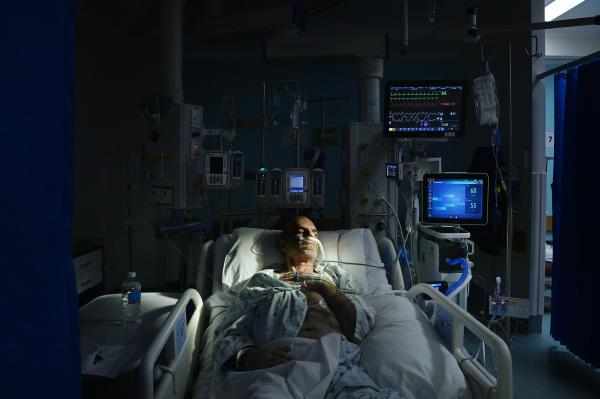
Charlotte Varcoe
A FORMER Penola/Coonawarra resident has received a prestigious photojournalism award recently with Kate Geraghty being announced as the recipient the Nikon-Walkley Photo of the Year.
Ms Geraghty’s top photo depicts a Covid-19 positive patient in the intensive care unit within the St Vincent’s Private Hospital in Sydney.
She began her journalism journey through studying in Perth before securing a cadetship at The Border Mail.
She then travelled to Sydney where she has continued to work as a photojournalist for the Sydney Morning Herald for more than 20 years.
“It was an honour to receive the award especially among the world’s best photojournalists across Australia,” Ms Geraghty said.
“The calibre of photojournalists in this country is exceptional.”
She said the concept for the photo originated following the delta-strain outbreak within New South Wales and continued from previous documentation she had taken throughout the pandemic.
“I had been documenting Covid since February last year and the first thing I did in regards to Covid was the return of the Ruby Princess,” Ms Geraghty said.
“I had been documenting the St Vincent hospital very early on in the pandemic, ranging from the red zone in emergency all the way through to pandemic training and testing.
“This meant I already had built a relationship and trust with the staff there and when the delta strain came into the state we knew this would be a game changer.”
Gaining access to the intensive care unit, Ms Geraghty said the opportunity came with a number of conditions.
“I had to be fully vaccinated, go through a fit test for a mask and was monitored with all the personal protection equipment that the medical staff were also wearing,” she said.
“I was monitored the entire time and was only allowed one camera and a lens to limit the exposure to the virus.
“When I was finished, the equipment had to be sterilised properly afterwards.”
She said being at the epicentre of the Covid response was a story which had to be told and she was invited within the facility during the height of lockdown.
“I did it because I wanted to show families how beautifully their loved ones were cared for,” Ms Geraghty said.
“Each patient in the intensive care unit had an individual health care nurse monitoring them and I saw incredible compassion.
“I also wanted to show that this was the reality of what was going on, that this is why we were in lockdown, why people were staying home as well as showing the family members that their loved ones were being cared for.”
Ms Geraghty said being a photojournalist throughout the pandemic did not come without challenges, stating the public needed to remember the industry remained essential.
“Journalists were still out and about during Covid but it changed how we worked,” she said.
“We were probably busier than ever, between daily press conferences, testing, vaccinations, political responses, economic responses and the impact the pandemic has had on society.
“Our job is always to inform the public and I went into the intensive care unit surrounded by the delta strain to show people what it looks like.”
The avid photojournalist said she had always been interested in photography and wanted to use her skills to tell a story.
“I wanted people to look at an image and have that image invoke emotion while telling people’s stories,” she said.







